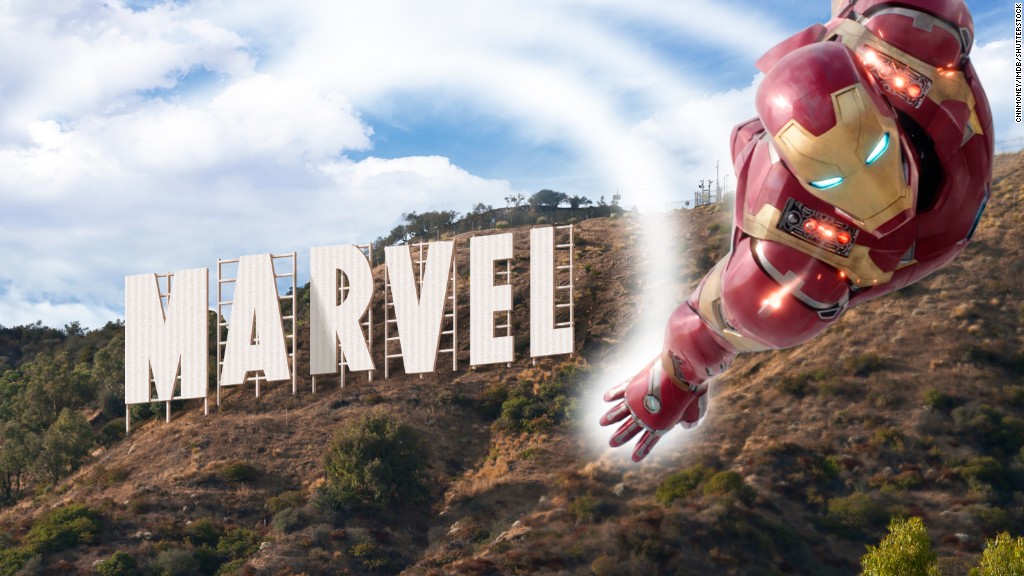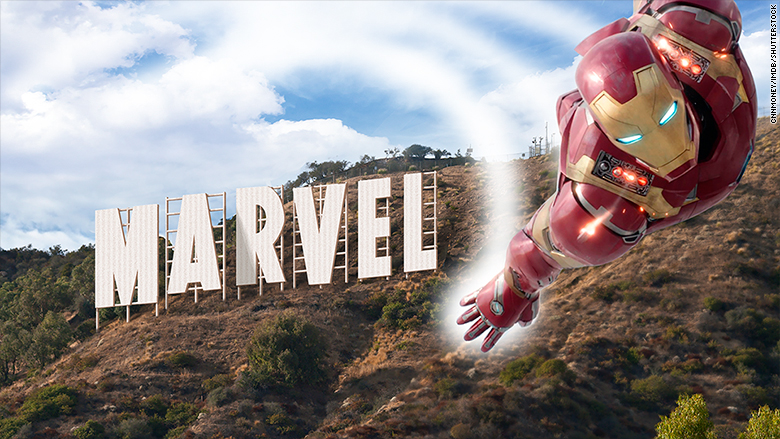
"Guardians of the Galaxy" opens with a guy known for playing chubby goofballs dancing to Redbone's 1974 hit "Come and Get Your Love." It is perhaps the most unusual opening possible, for the most unusual superhero movie ever. Yet that movie made $773 million worldwide.
This weekend, the sequel to that film brings back that same goofball (he's no longer chubby), along with his co-stars from the first: a green Zoe Saldana, a professional wrestler, a talking raccoon and a baby tree. And it might make even more money this time.
How is this possible? It's because Disney's Marvel Studios, which is behind both films, doesn't make superhero movies -- it makes movies from all sorts of different genres that just happen to star superheroes.
"I always equate it to the comics themselves, and the stories told in those comics are as diverse as any different stories you'd find in novels," Marvel Studios president, Kevin Feige said to reporters at Marvel Studios' open house in Burbank two weeks ago. "It's a genre of films based on books."
That has been evident throughout Marvel's run of successful movies over the past 10 years. 2014's "Captain America: The Winter Soldier" isn't a superhero movie; it's "Three Days of the Condor" with a superhero in it. 2015's "Ant-Man" isn't a superhero movie; it's a heist film with a superhero in in it. 2016's "Captain America: Civil War" isn't a superhero movie -- it's "Kramer vs. Kramer," but recast with Iron Man and Captain American in place of Dustin Hoffman and Meryl Streep.
In theory, Marvel's success really just comes down to the brand, and the near 80 years of stories behind it. But the struggles Warner Bros. has had with rival DC Comics shows that just having superheroes isn't everything: It's all about the way you use them.
And the way Marvel uses its superheroes isn't actually that innovative -- actually, it's arguably how Hollywood operated in its golden age: the studio system.

Related: "Guardians of the Galaxy Vol. 2" review
Under the studio system, the movie studios had stars like Judy Garland, Bette Davis and Clark Gable under contract, and could deploy them into a variety of different films and genres. Marvel does the same thing: where MGM took Gable from "Red Dust" to "Dancing Lady," Marvel can take Thor from an epic drama in which he's the star ("Thor") to sidekick in an ensemble movie ("The Avengers") to co-star in a buddy picture with the Hulk ("Thor: Ragnarok"), and bring audiences along for the whole ride.
Thomas Schatz, a film historian and expert on Hollywood filmmaking history, says that has helped Marvel to control and use its brand better than just about anybody in Hollywood.
"With the old studios, it was all about having stars under contract. In the new day, it's all about owning intellectual property, and the range of property that they own enables them to obviously regulate production and output," he said. "They're cranking it out at a pace that, by contemporary standards, is off the charts."
Now Marvel needs to keep using that model from the past to secure its future.
Next year, continuing the trend, Marvel is releasing three different kinds of movies: the geopolitical adventure "Black Panther," the sprawling, cross-franchise "Avengers: Infinity War" and the quirky, "Ant Man and the Wasp."
Yet, while Disney (DIS) would undoubtedly love to see the studio's adventures and massive ticket sales continue indefinitely, even Feige knows that Marvel's universe isn't infinite.
"I think there's definitely an endgame. When that is? I don't know. Is it fifteen movies from now? Is it three movies from now?" he said. "These characters have existed long before most of us were around and I think they'll exist long after most of us are around."


